
Scientific name: Aetobatus narinari
Size: Up to 60 inches wingspan
Color: Brown gray and white
Distinguishing feature: Diamond-shaped body, white spots on the top, very long and fine tail. Muzzle in duckbill.
Where did we see it: Zanzibar, French polynesia, Mexico, Maldives

Scientific name: Aetobatus narinari
Size: Up to 60 inches wingspan
Color: Brown gray and white
Distinguishing feature: Diamond-shaped body, white spots on the top, very long and fine tail. Muzzle in duckbill.
Where did we see it: Zanzibar, French polynesia, Mexico, Maldives
The body is 1.8 times wider than long (without the tail) The tail measures about 2.2 times the body.
This ray moves over great lengths, sometimes in shoal of up to several hundred individuals. It is a diurnal species.
It can make very big accelerations to escape its predators (the white tip shark and the hammerhead shark).
It can throw itself out of the water, it could be that to be de-wormed.
The largest specimen had a wingspan of 10.8 feet and a total length of 27.9 feet


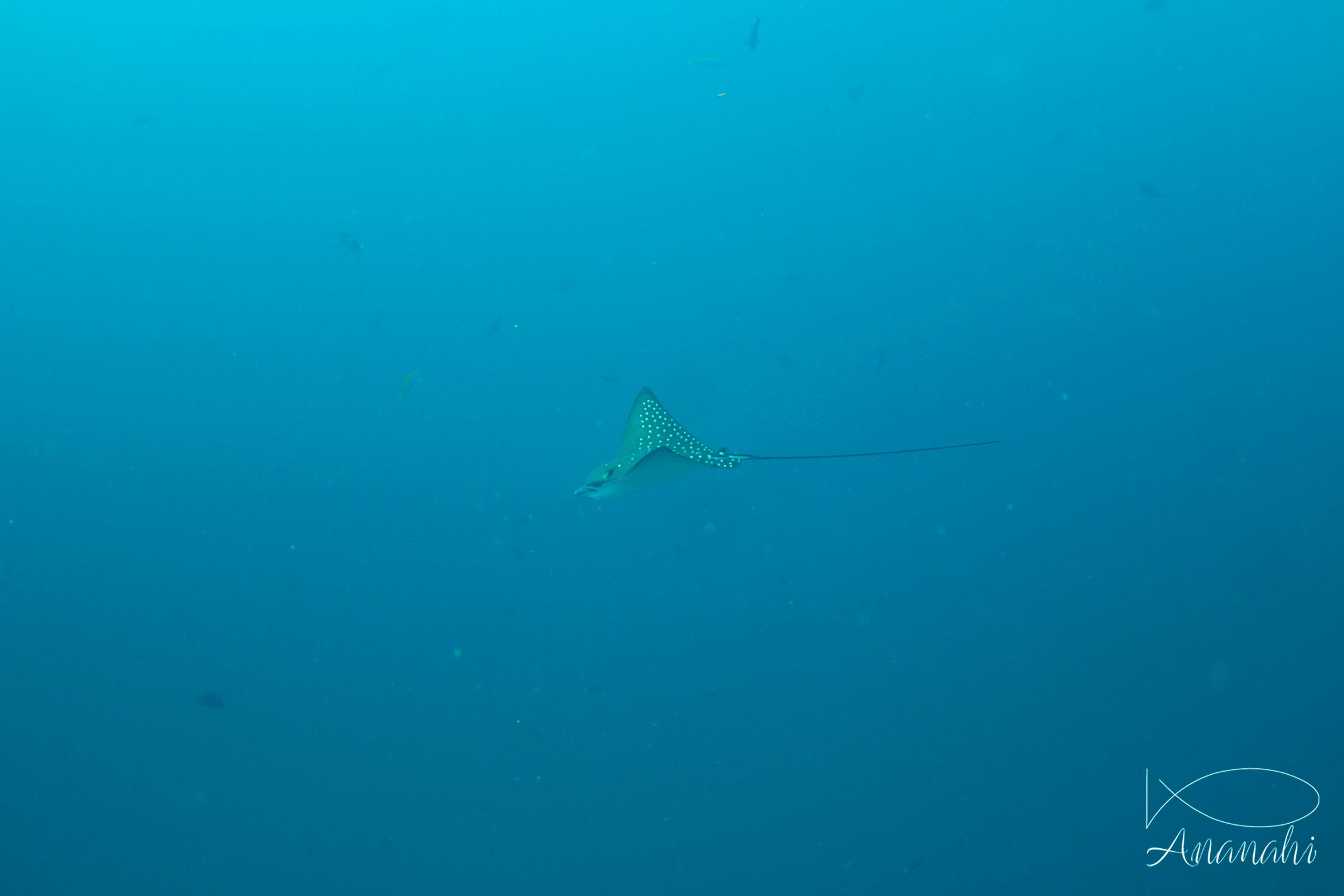
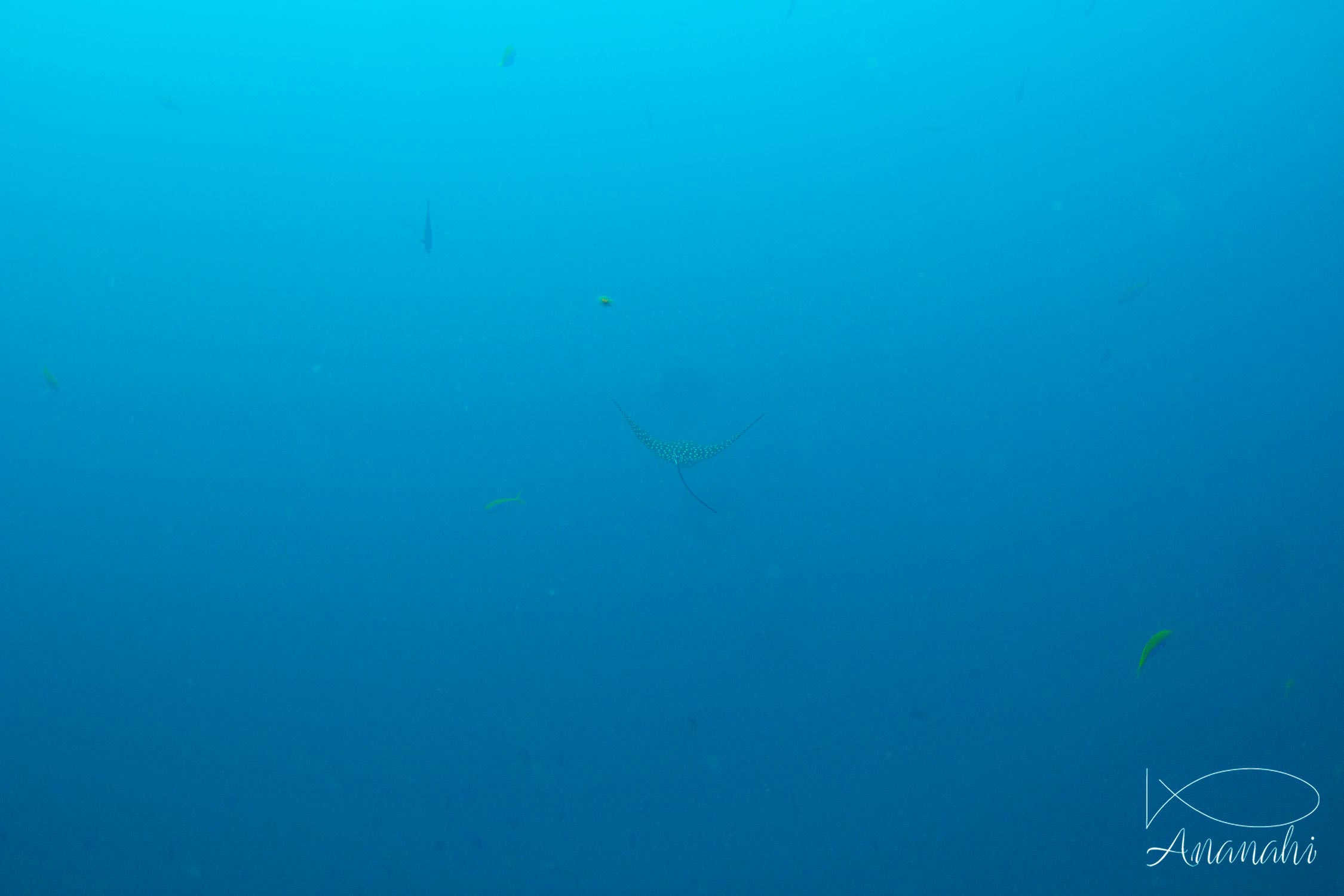

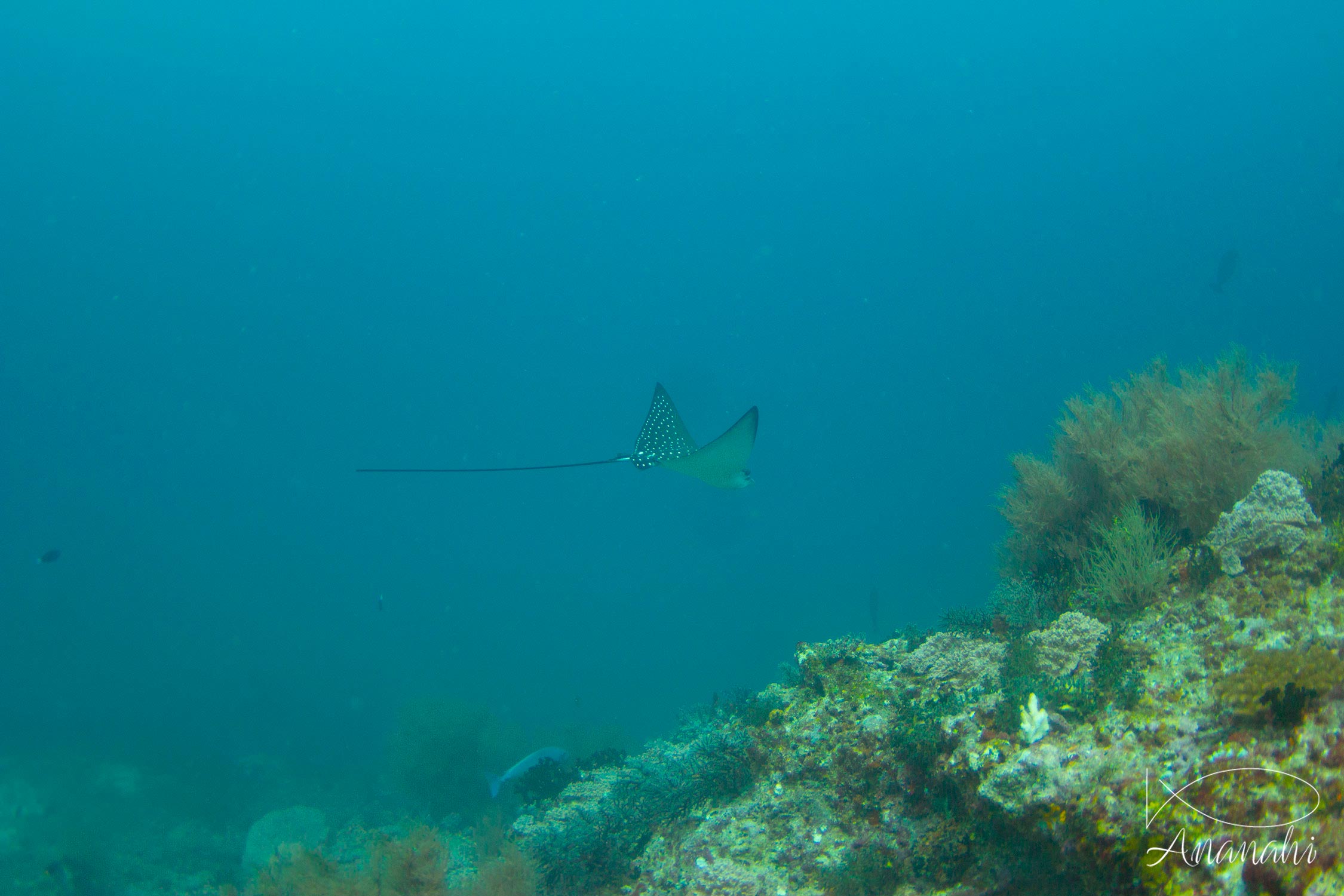
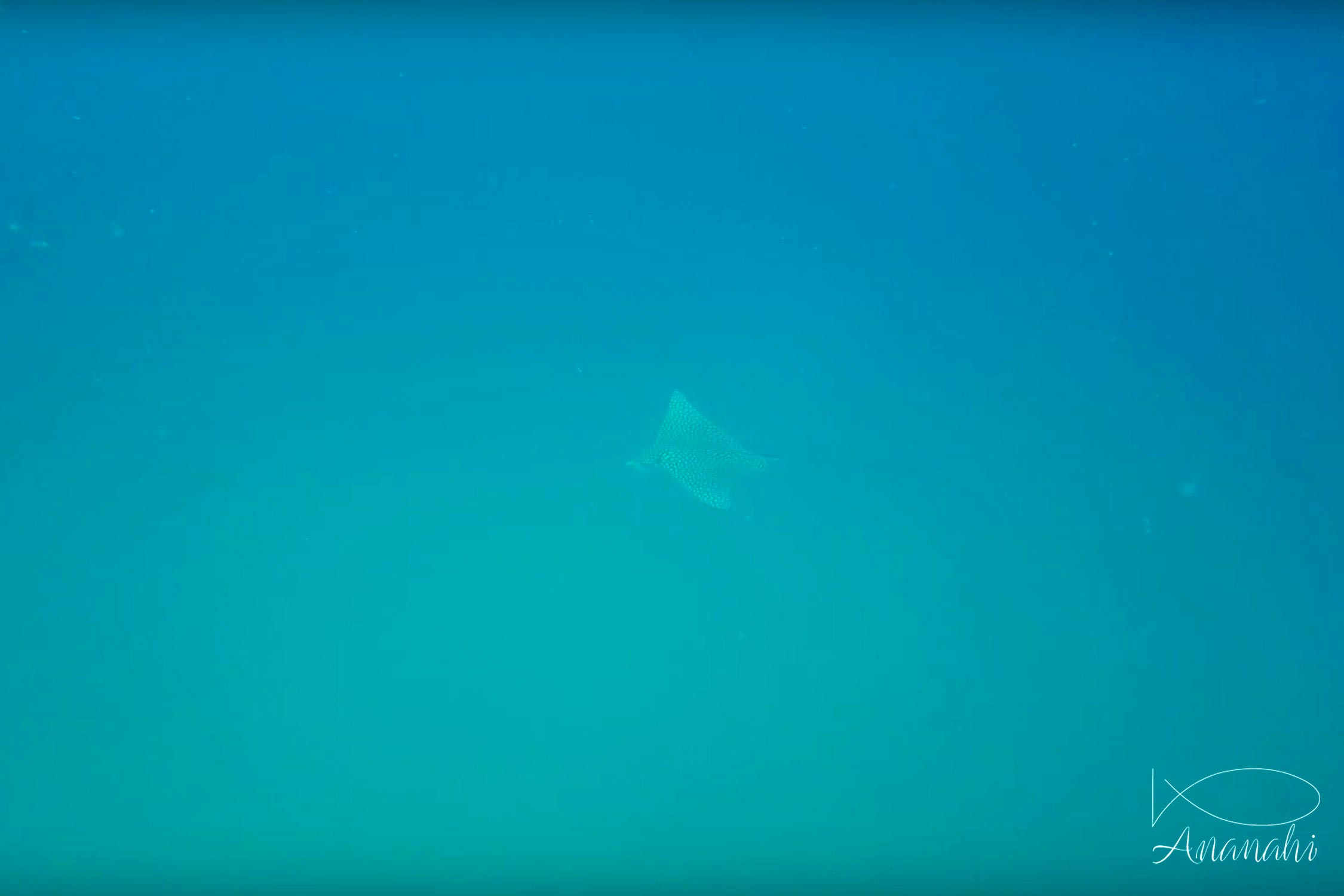
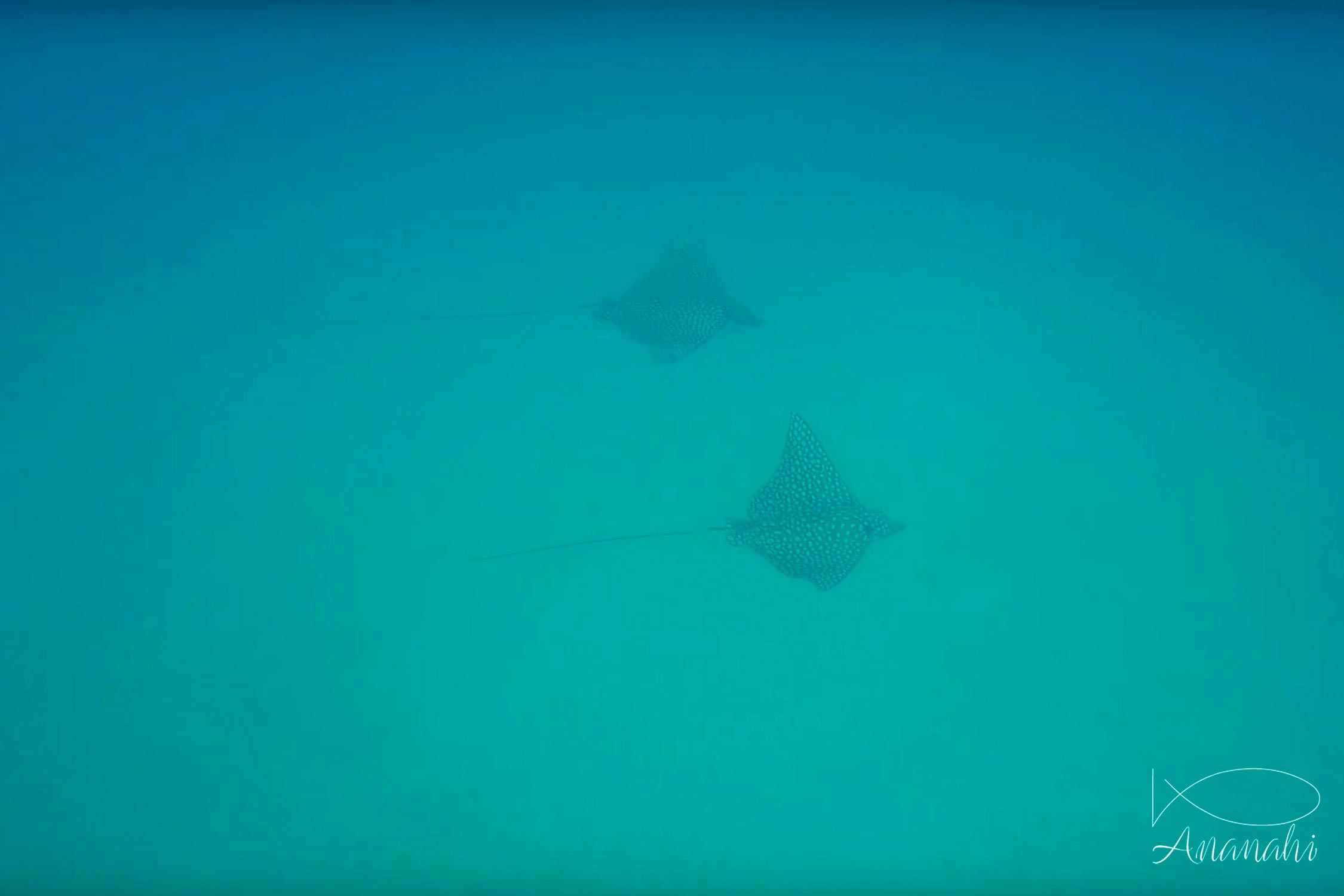
The whale shark is the largest fish in the world!
Some whales are larger, but they are mammals, not fish!
Turtles are in economy mode when they are sleeping. If they are woken during night, they may not have enough air to return to surface.
So, please be careful during night dives!
We can hear the bull shark is very dangerous because of attacks near La Réunion island.
However, tens of them are living at 600 feet from the famous beach of Playa Del Carmen in Mexico. And there are no attacks.